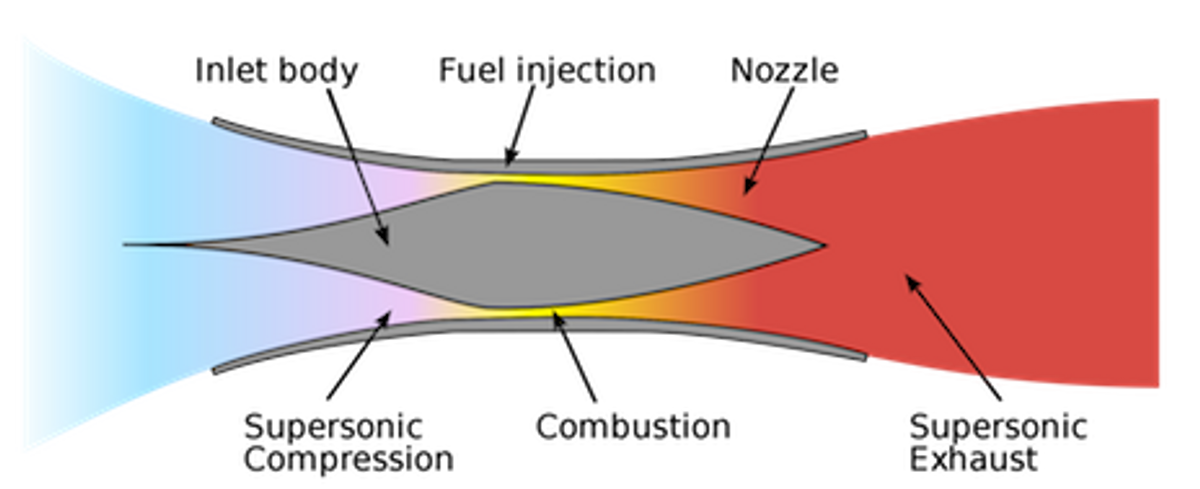The military’s experimental scramjet, the Boeing X-51A Waverider, blew up yesterday during a test flight at a California naval aviation center. Though failure is an orphan, and only success has a thousand fathers, it is only fair to Boeing to note that the X-51A is a joint project with Pratt & Whitney Rocketdyne, NASA, DARPA and the U.S. Air Force. One or all are responsible, because this time, no one can pin the blame on pilot error: the X-51 was unmanned.
The Waverider name refers to a design that flies through the air not in the usual manner but rather on the back of the shock wave created by the aircraft’s hypersonic motion. How hypersonic? Say, six times the speed of sound, or about 6,500 kilometers (or 4,000 miles) per hour, at altitude. The wing-riding concept dates back to a 1951 paper by Terence Nonweiler of Queens’ University of Belfast.
That long intellectual genealogy is typical of many things technological. Hypersonic flight has only the feel of newness. People have been working on it, and failing at it, for a long time.
The interesting question is why anyone bothers. No executive is busy and important enough to want flight times that save him three hours in the air at the cost of five extra hours on the ground, making out his will.
It’s the military that's driving this one, through an initiative called Prompt Global Strike. The idea is to be able to drop a conventional bomb down a chimney, anywhere in the world, within an hour. You could argue that such a precision approach might supplant the blunderbuss of nuclear retaliation. Especially if the chimney is on the house of a Dear Leader with whom the United States may be having some friction.
But quickly getting a bomb to where you want it need not entail spending billions on monstrous, air-breathing missiles. You could just pre-place your weapons—either right in the chimney, secret-agent style, or at an airfield within an hour’s flight of your likely targets. That’s what allies are for.
And speaking of air-breathing, that brings us to the heart of the X-51: its scramjet engine. The first two letters stand for “supersonic combustion;” the rest is just Ye Olde Ramjet, which rams air into its combustion chamber by the sheer force of its forward movement. But in a scramjet, unlike Ye Olde version, the stream isn’t deliberately slowed at the inlet but is allowed to move supersonically all the way through the combustion and emission phases. That trick allows the jet to work at ridiculously high velocities—say, 12 times the speed of sound or more.
It sounds hard to implement, and it is. The temperature gradients are fierce, the materials requirements high, the fuel injection tricky, the chances of a glitch great. And you can’t light that candle without first getting the aircraft up to high speed, which requires a rocket booster, a jetilicious mothership, a rail gun, or a slingshot.
All these complications make you wonder about that 60-minute deadline. “Delivery times may vary,” the package probably will say, in fine print.
There are other ways to drop an anvil on your enemy. For instance, you could use our existing fleet of ballistic missiles. A Minuteman rocket may seem a rather extravagant delivery vehicle for—what? a hand grenade?—but we already have plenty of those rockets. They’re paid for. They are accurate. And they’re very fast.
Philip E. Ross is a senior editor at IEEE Spectrum. His interests include transportation, energy storage, AI, and the economic aspects of technology. He has a master's degree in international affairs from Columbia University and another, in journalism, from the University of Michigan.


